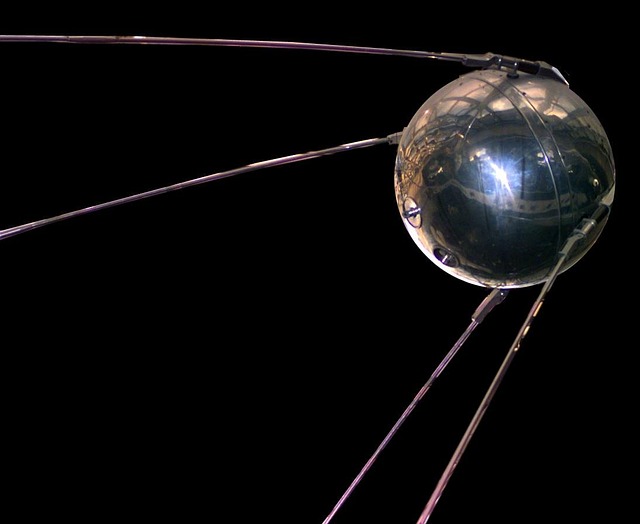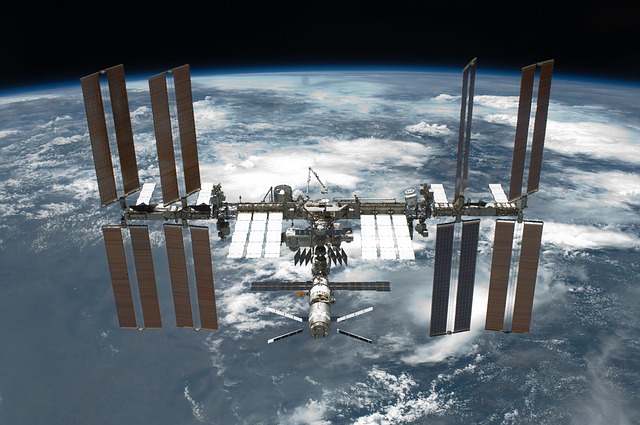Space movies have been around since the early days of cinema. The first film was “A Trip to the Moon” directed in space in 1902. Since then, there have been many space movies that have been released. Some of the best space movies of all time include Apollo 13, Gravity, Interstellar, The Martian, and 2001: A Space Odyssey.
Importance of Space Movies
Space movies have played a significant role in the history of cinema and have captivated audiences for over a century. From the pioneering days of silent films to the modern era of advanced visual effects, space movies have consistently pushed the boundaries of imagination and technology. They have become a staple in the film industry, providing thrilling adventures, awe-inspiring visuals, and thought-provoking narratives.
The first space movie, “A Trip to the Moon,” directed by Georges Méliès in 1902, marked the beginning of an enduring fascination with space exploration on the silver screen. This groundbreaking film showcased a group of astronomers traveling to the moon in a bullet-shaped capsule and encountering bizarre lunar inhabitants. It was a remarkable achievement considering the limited technological resources available at the time.
Since then, space movies have evolved alongside advancements in filmmaking techniques and our understanding of space. These films have not only entertained audiences but also played a crucial role in shaping our perception of outer space and its potential for exploration. They have inspired generations of scientists, astronauts, and engineers to push the boundaries of human knowledge and venture into the vast unknown.
Challenges of Space
Space movies often depict the triumphs and challenges of space exploration, highlighting the human spirit of adventure and the pursuit of knowledge. They showcase the dangers astronauts face in extreme environments, the complex technology involved in space travel, and the emotional and psychological toll it takes on individuals.
These movies serve as a testament to human resilience, ingenuity, and the collective will to explore beyond our earthly boundaries. Moreover, space movies have also contributed to popularizing scientific concepts and educating the general public about space.
In our daily routines, space movies offer a form of escapism and entertainment. They transport us to distant galaxies, allowing us to experience the wonders and dangers of space from the comfort of our homes or movie theaters. These movies have the power to ignite our imaginations, evoke a sense of awe, and make us contemplate our place in the universe.
Furthermore, these films have also served as a platform for exploring philosophical, ethical, and existential questions. Movies like “Interstellar” delve into the complexities of time, space, and human existence, challenging us to contemplate our purpose and the mysteries of the universe. They encourage discussions and debates about scientific theories, the nature of reality, and the potential future of space exploration.

Did space movies help in advancing space technology?
While space movies themselves do not directly contribute to advancing space technology, they have played a role in inspiring and popularizing the idea of space exploration, which indirectly influences technological advancements in the field. The movies have helped spark public interest and enthusiasm for space, leading to increased support, funding, and investment in space programs and research.
The portrayal of space missions, futuristic spacecraft, and advanced technologies in movies has often captured the public’s imagination and generated excitement about the possibilities of space exploration. This heightened interest can translate into greater public support for space agencies, such as NASA, and encourage governments and private entities to allocate more resources toward space programs.
Additionally, movies have indirectly contributed to the growth of the entertainment industry, which plays a role in funding technological advancements. The success of space-themed movies at the box office generates revenue that can be reinvested into the film industry, including the development of cutting-edge visual effects technologies. These technologies, in turn, can find applications beyond the film industry and be utilized in scientific visualizations, virtual reality simulations, and educational platforms related to space.
Popular Space Movies
Here are some space movies:
· Memoirs of an Invisible Man
This is a comedy-drama film titled “Memoirs of an Invisible Man” that was released in 1992. It was directed by John Carpenter and features an ensemble cast including Chevy Chase, Sam Neill, Daryl Hannah, Michael McKean, and Stephen Tobolowsky. The movie loosely adapts the storyline from the 1987 novel of the same name, written by H.F. Saint.
· Solar Crisis
This is an original science fiction thriller film from 1990 that is a Japanese-American co-production, directed by Richard C. Sarafian. The screenplay was written by Joe Gannon and Tedi Sarafian, based on the 1990 novel titled “Crisis 2050” by Takeshi Kawata, who also served as a co-producer of the film. The story centers around the Earth Defense League, a team of dedicated scientists and astronauts who are entrusted with the crucial mission of saving the planet from an imminent and devastating solar flare. Set in the year 2050, the film portrays a future where the sun has become increasingly volatile and unstable due to humanity’s long-standing mistreatment and neglect.
· Space Movie Apollo 13
This is a critically acclaimed American space film released in 1995, directed by Ron Howard. The film is based on the true story of the Apollo 13 mission, which was intended to be the third mission to land humans on the Moon but became a harrowing tale of survival in space.
The movie stars Tom Hanks, Kevin Bacon, Bill Paxton, Gary Sinise, and Ed Harris in lead roles. It follows the journey of astronauts Jim Lovell (played by Tom Hanks), Fred Haise (played by Bill Paxton), and Jack Swigert (played by Kevin Bacon) aboard the Apollo 13 spacecraft. Their mission takes an unexpected turn when an oxygen tank explodes onboard, causing critical damage to the spacecraft and jeopardizing the lives of the crew.
The movie was a commercial success, earning over $355 million worldwide. It received nine Academy Award nominations, including Best Picture, and won two Oscars for Best Film Editing and Best Sound. The film is regarded as one of the most compelling and accurate depictions of space exploration in cinema.

· Gravity
This is a 2013 science fiction thriller directed by Alfonso Cuarón. The film stars Sandra Bullock and George Clooney as astronauts who find themselves stranded in space after their shuttle is destroyed by debris. “Gravity” is known for its stunning visuals and groundbreaking use of 3D technology, immersing viewers in the vastness and dangers of space.
The film received critical acclaim for its intense storytelling, innovative cinematography, and Bullock’s powerful performance. It won seven Academy Awards, including Best Director and Best Visual Effects, and has been regarded as a landmark in space cinema.
· Interstellar
“Interstellar” is a highly acclaimed epic science fiction film released in 2014, directed by Christopher Nolan. Set in a dystopian future where Earth is facing an environmental crisis, the movie follows a group of astronauts, led by Matthew McConaughey’s character, as they embark on a journey through a wormhole to find a habitable planet for humanity.
Known for its ambitious storytelling and mind-bending concepts of time and space, “Interstellar” combines emotional depth with stunning visuals and a thought-provoking narrative. The film received critical acclaim and was praised for its scientific accuracy, performances, and Hans Zimmer’s memorable score.
· The Martian
“The Martian” is a science fiction film from 2015, directed by Ridley Scott. It is based on the novel of the same name written by Andy Weir. Starring Matt Damon as astronaut Mark Watney, the movie follows his struggle for survival after he is left stranded alone on Mars when his crew mistakenly assumes he has been killed.
Watney must use his scientific expertise and resourcefulness to find a way to signal Earth and sustain himself until rescue becomes possible. “The Martian” received critical acclaim for its engaging story, humor, and Damon’s performance.
The film was praised for its scientific accuracy and attention to detail in depicting the challenges of surviving on Mars. It received numerous accolades, including two Golden Globe Awards and seven Academy Award nominations.
· Gayniggers from Outer Space (1992)
This is a satirical science fiction film directed by Danish filmmaker Morten Lindberg. The movie tells the story of a group of gay aliens who travel to Earth with the mission of eradicating the heterosexual population.
This low-budget independent film aims to challenge and subvert traditional science fiction and societal norms through its humorous and provocative approach. While it has gained a cult following, it’s important to note that the film’s title and content may be considered offensive to some.

· Star Trek VI: The Undiscovered Country
“Star Trek VI: The Undiscovered Country” is the sixth installment in the original “Star Trek” film series. Directed by Nicholas Meyer, the movie features the original cast of the “Star Trek” television series, including William Shatner, Leonard Nimoy, and DeForest Kelley.
The film follows the crew of the starship USS Enterprise as they embark on a peace mission with the Klingons. It explores themes of political intrigue, prejudice, and the possibility of peace between longtime adversaries. “Star Trek VI” was well-received by both critics and audiences and is considered one of the standout films in the franchise.
· Freejack (1992)
This is also a science fiction action film directed by Geoff Murphy. Set in a dystopian future, the movie stars Emilio Estevez as a race car driver who is transported forward in time moments before a fatal accident. In this future world, powerful individuals seek to transfer their consciousness into the bodies of the recently deceased, with the driver becoming a target for capture.
The film combines elements of science fiction, action, and cyberpunk, and explores themes of identity, mortality, and corporate power. While “Freejack” didn’t receive widespread critical acclaim, it has gained a cult following for its distinctive blend of genres.
· The Lawnmower Man (1992)
This is also a science fiction horror film directed by Brett Leonard. Loosely based on a Stephen King short story, the movie follows a mentally challenged man named Jobe, played by Jeff Fahey, who becomes the subject of a virtual reality experiment that enhances his intelligence and gives him extraordinary powers. As Jobe’s abilities grow, he becomes increasingly unstable and dangerous.
“The Lawnmower Man” explores themes of technology’s impact on the human mind, the potential dangers of virtual reality, and the ethical implications of scientific experimentation. The film was notable for its early use of computer-generated imagery (CGI) and virtual reality imagery.
Conclusion
In conclusion, space movies have a rich history and continue to play an integral role in our daily routines. They entertain, inspire, educate, and provoke thought, offering us a glimpse into the possibilities and challenges of space exploration. These films celebrate the human spirit of exploration, fuel our imagination, and remind us of our enduring fascination with the great unknown that lies beyond our home planet.
Furthermore, these movies contribute to the popularization of space exploration, which, in turn, can foster a positive environment for scientific research, engineering innovations, and technological progress in the field of space exploration.

